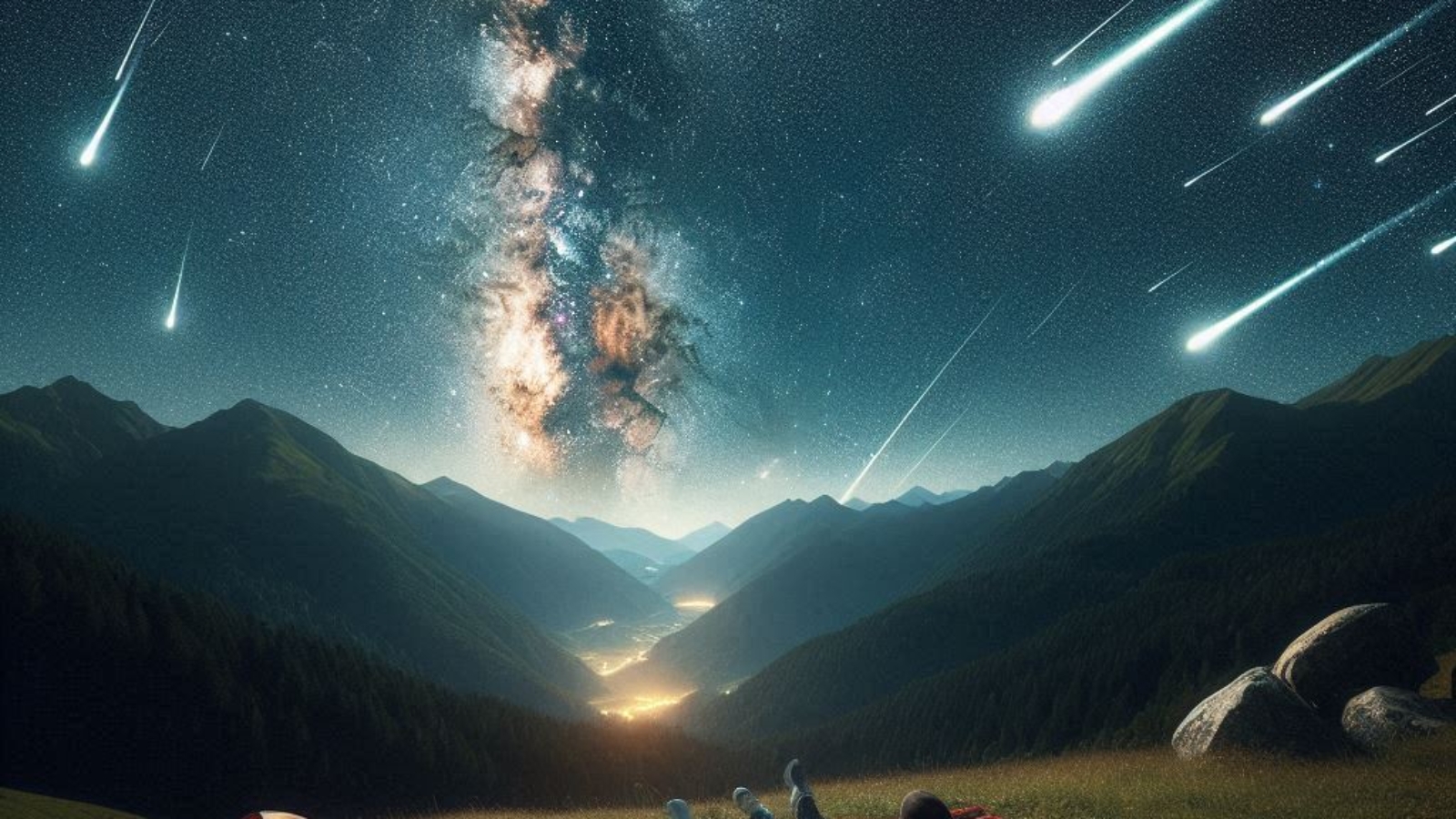If you’ve ever dreamed of seeing shooting stars light up the night sky, this week is your chance! The Perseid Meteor Shower 2025 is reaching its peak, and it’s going to be one of the brightest, most spectacular space shows you’ll ever witness.
Every August, NASA and space lovers worldwide eagerly wait for the Perseid meteor shower peak — a cosmic event caused by comet Swift-Tuttle. This year, scientists predict over 100 meteors per hour at its peak, making it a must-watch event for stargazers.
When to Watch the Perseid Meteor Shower 2025
- Peak Dates: August 11–13, 2025
- Best Time: After midnight until dawn
- Best Viewing Conditions: Away from city lights, in open dark skies
Tip: Lie down, let your eyes adjust for at least 20 minutes, and simply watch the meteors streak across the sky. No telescope needed!
Why the Perseid Meteor Shower Is So Special
The Perseids are famous for being bright, fast, and colorful. Many even leave glowing trails behind — perfect for night sky photography. This year’s peak comes with a nearly moonless night, meaning better visibility for all meteors.
According to NASA, the meteors are debris from the Swift-Tuttle comet, which orbits the Sun once every 133 years. As Earth passes through its dust trail, tiny space rocks burn up in our atmosphere, creating brilliant shooting stars.
How to Get the Best View
- Find a Dark Spot – The darker the sky, the more meteors you’ll see.
- Avoid Phone Lights – Let your eyes fully adjust.
- Be Patient – The show can last hours, but the best bursts often come in waves.
- Bring a Blanket – Watching the stars is better when you’re comfortable.
What Scientists Say About the 2025 Perseids
Astronomers are calling this year’s Perseid meteor shower one of the best in a decade. If the skies are clear, you could witness one meteor every 30 seconds at peak.
NASA experts recommend watching after midnight, when Earth’s rotation faces directly into the comet debris stream — meaning more meteors enter our atmosphere at higher speeds.
Fun Fact
The name “Perseids” comes from the constellation Perseus, where the meteors seem to appear from. You don’t need to find Perseus to enjoy them — meteors will light up all parts of the sky!
⭐ Don’t miss it — the Perseid Meteor Shower 2025 is nature’s free fireworks show, and it only comes once a year.

 Cart is empty
Cart is empty 
https://shorturl.fm/RcVM2